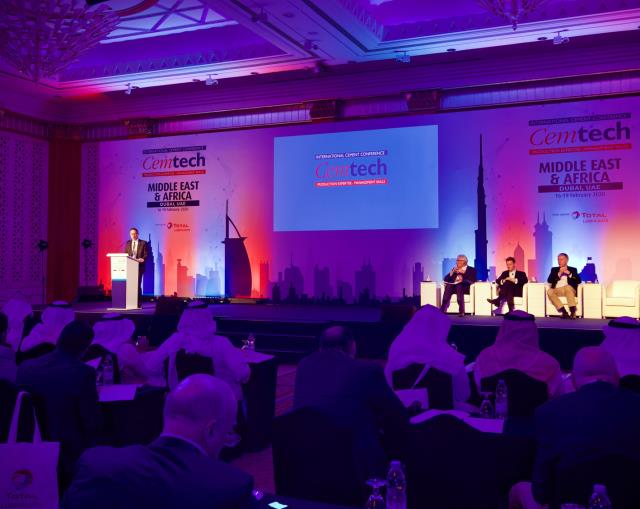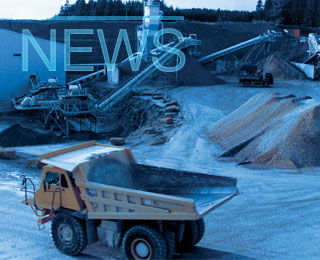The 15th Cemtech MEA conference and exhibition has opened at the Grand Hyatt Dubai, UAE. Thomas Armstrong, managing editor of ICR, started proceedings by welcoming delegates to Dubai and also provided an update on the cement markets of the GCC.
The GCC markets are currently facing the issue of large-scale oversupply, with the region hitting a peak demand level in 2015. Total capacity increased to 157Mta in 2018 from 110Mta in 2010, while consumption is currently at around 73Mta. However, Saudi Arabia, the GCC’s largest market, is beginning to provide some relief to the sector by recently posting a solid monthly demand growth.
Mr Armstrong also introduced the rest of the two-day conference programme, highlighting presentations from leading regional cement producers such as Raysut Cement (Oman) and JSW Cement (India/UAE).

Cemtech Middle East & Africa 2020 opens at the Grand Hyatt Dubai, UAE
Economic forecasts and global overviews
Giving an economic context to the programme, Paul Roger of Exane BNP Paribas (UK) noted the disappointing growth in the world economy in 2019. However, Mr Roger also forecast an overall 2.6 per cent growth in global cement consumption for 2020. Particularly strong markets over the coming year are expected to include North America and certain European countries, such as Poland.
Frank Brannvoll, Brannvoll ApS (Denmark), assessed the global energy markets and provided a forecast for 2020. There remains a general uncertainty in petcoke prices for the year ahead, as the availability of the fuel increases while demand may fall. Mr Brannvoll also considered the EU-ETS carbon market and forecast an average range of EUR25-35+ for 2020.
Elsewhere, Peter Hoddinott (UK) discussed how many popular preconceptions about the cement industry are no longer applicable. For example, the industry no longer has such a high barrier to entry for new players, due in part to the influx of cheaper technology from Chinese equipment suppliers.
MEA cement markets
Following the comprehensive market overviews, the programme began to direct its focus to specific cement markets from the MEA region.
Raysut Cement’s Joey Ghose (Oman) outlined the current state of the country’s cement industry and also delivered an outlook of the company’s future. One of the most significant challenges for the domestic sector is that it remains the largest market for UAE cement exports, with this having a knock-on effect on domestic production and sales. Despite this, Raysut Cement has recently started recording a resurgence in financial performance and is also planning further international projects. In particular, Mr Ghose detailed the company’s plans for a 16Mta expansion into eastern Africa.
Manoj Rustagi, JSW Cement, detailed the company’s successful project to set up a 1Mta clinker production unit in Fujairah, UAE. The plant, constructed on an EPC basis by Sinoma, is set to begin production in the first week of March. Once commissioned, the facility will ship clinker, alongside high-quality limestone from a nearby mine, to Mumbai for processing and dispatch.
The programme continues
The conference continues today with case studies of industrial innovation in the cement industry from the leading manufacturing technology suppliers and culminates in a Gala Dinner with an outstanding range of regional entertainment.
Delegates also have the opportunity to network and discuss manufacturing solutions with industry experts at the 21-stand event exhibition.
Finally, this year’s plant tour will see attendees visit the 4.5Mta Union Cement Co unit in Ras Al Khaimah, one of the largest facilities in the region.
The full event report for Cemtech MEA 2020 will be published in the April issue of International Cement Review.
